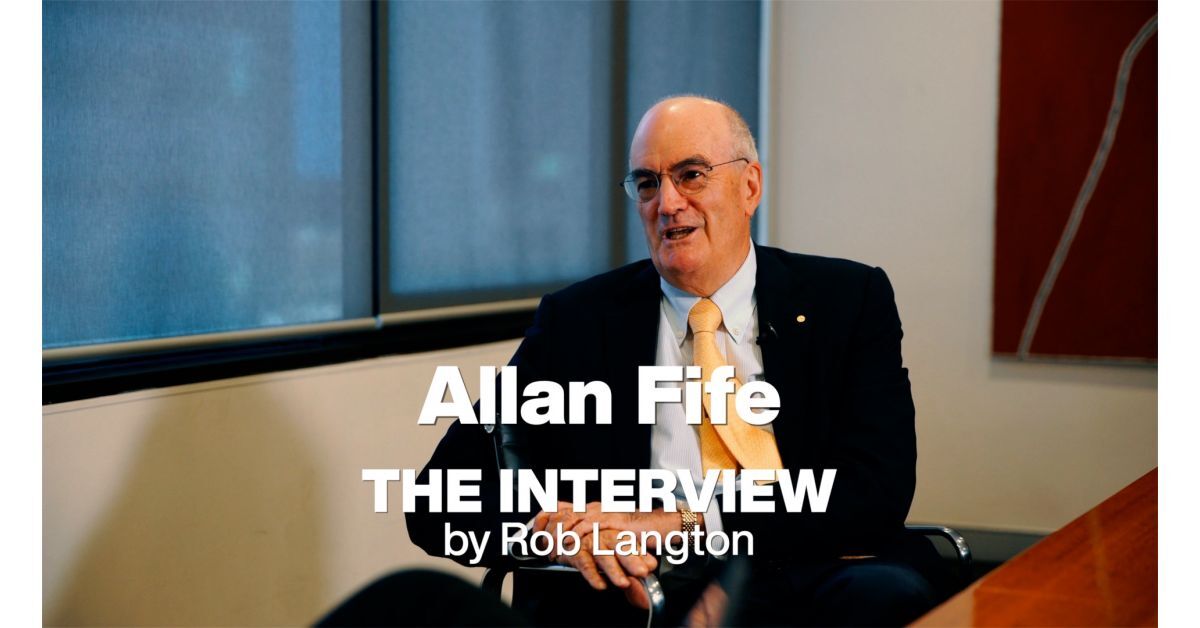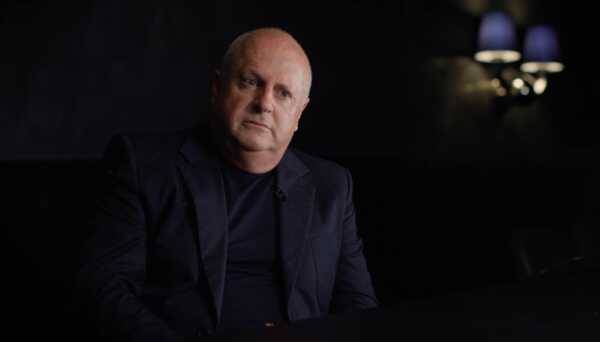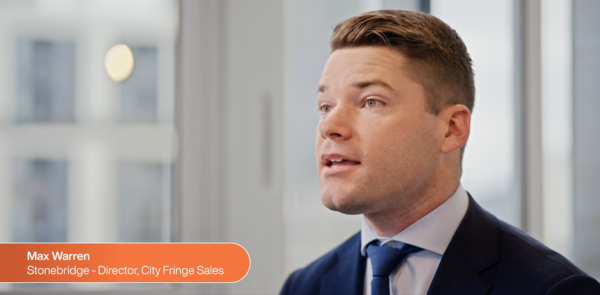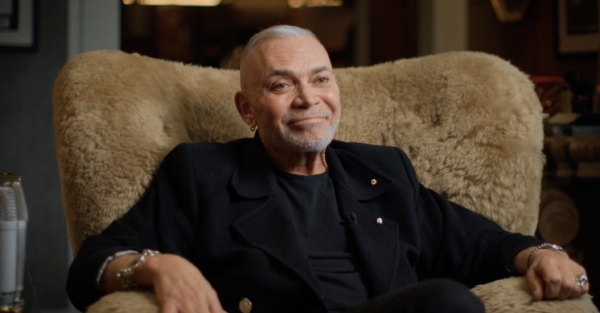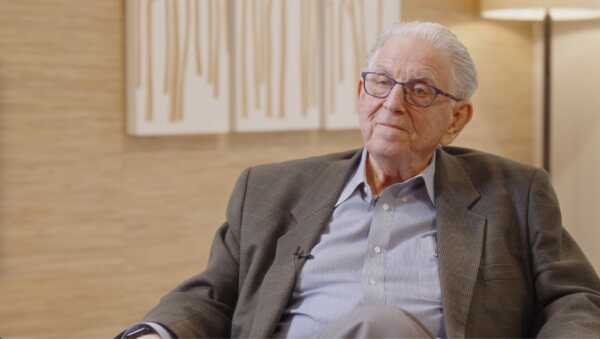About this Interview
Our next guest is Allan Fife OAM - Founder & Chief Investment Officer of Fife Capital. Allan Fife is responsible for the performance of the Group’s funds and investments. Leading the executive team, Allan is engaged in the evaluation of investment opportunities, structuring investment products for clients and meeting mandated undertakings of the company.
Ready Media Group is the home of Australia's best property & business interview series - with over 100 high-profile guests joining our program since 2016.
The Interview, Allan Fife OAM Transcript
*Please note, this transcript was auto-generated and some inaccuracies may exist.
Allan Fife OAM 00:00
There's an importance in remaining current within the market, seeing the direction that the market is taking, so that your analysis of a potential investment is made on the basis of where you will see it in five or 10 years time.
Rob Langton 00:19
I'm Rob Langton. Our interview series delves into the lives of Australia's most respected property thought leaders and decision makers and uncovers what makes them tick. This is The Interview. It's a pleasure to have with us this afternoon, Allan Fife OAM, Alan, thanks so much for your time. Walk us through some of your say childhood and upbringing. Where did you grow up? And what are some of your earliest memories.
Allan Fife OAM 00:46
So I grew up in Wagga, and was very involved in the family business, which was principally produce and logistics based business, then went to boarding school, in Canberra, for my high school, education, and then off to university in Sydney, for my, for my final part of my educational journey, or what I thought was my final part of my educational journey, it's sort of it's lingered on a little bit further my educational journey, and I think my grandchildren now have assumed that I must be just a really slow learner, because there's no way they want to be learning for as long as I have been.
Rob Langton 01:34
And what was it that you learned at university,
Allan Fife OAM 01:37
I actually was a lot more interested in working part time in a real estate agency than I was, in my academic studies, which were largely associated with economics, and politics. It was more a case of getting it out of the way, I think my undergraduate years were very much a part of satisfying my family that I guess gone to university or ticked that box, and I was going to get out of there as fast as I possibly could, and get on and do something and, and as it transpired, I went back to Wagga to work in the family business for quite a while after completing my undergraduate degree and, and then realised that my, my passion was real estate.
And so whilst we had undertaken some retail development and office development in Wagga, that, that I wanted to broaden our family exposure to real estate and that that then took me to the north coast of New South Wales. And I worked for a period in property development in Port Macquarie, and then moved back to Sydney to join Jones Lang. Long time ago, I can't remember how far back
Rob Langton 02:59
And how long were you at Jones Lang? And what was the role?
Allan Fife OAM 03:03
Jones Lang were interested in establishing a business in the financial services area. And so I went in to the equity as distinct from debt side of financial services. It was being led by a chap called John Osted, who was an exceptional mind and or is an exceptional mind. And it was it was a great innovation because I think Jones Lang identified very early in the piece, that there was going to be a role for institutional investment banking style services in real estate as well as the pure intermediation functions. And, and the group of very bright people who were in Jones Lang at the time, saw this, saw the opportunity and work and built a team in that area was a very, very good time to be around Jones Lang.
Rob Langton 04:07
And you later joined the grant. Samuel, tell us about how that opportunity came about.
Allan Fife OAM 04:12
There are a couple of things happened. I think there was a period when Jones Lang were losing their focus on the financial services side of activity. I, I had, I had a client relationship at when I was at Jones Lang with the Packer organisation, and I was providing advisory services to the Packer family and to the Packer Group. And it was the senior executives at Packer's that asked me to leave and go and work with Consolidated Press.
And I spoke to my father at the time and he said, I think you probably more valuable To the Packer family if you're outside rather than inside, consolidated press, I shared that view with the Packer's. And they recommended I don't speak with Ross Grant at Grand Samuel. And so that's how I finished up at Grant Samuel. And I arrived with a business plan.
This is what I think a real estate investment bank looks like. He looked at it, Ross Grant looked at it for 24-48 hours, he called me back and said, Look, I really frankly, I don't understand what all of this means. But you've got a fantastic referee in in Kerry Packer. So how about you come and set this thing up? And so I had a blank piece of paper. And with that, I was able to work on the development of concept for a real estate investment bank.
Rob Langton 05:51
And what was it like working with Kerry Packer?
Allan Fife OAM 05:53
Oh, it'samazing. Probably one of the most generous men I've ever been involved with. All I ever saw was his patience, and generosity toward people, amazing man. And so different from many of the images that we sometimes see portrayed of him.
I tended to work with people in his organisation, so it was very rare that I referenced necessarily to him. But there were people like Ray Stone and others who were instrumental in the day to day operations of their business. And I guess I really enjoyed my relationship with those people. It was exceptional.
Rob Langton 06:45
So you spent 16 years I believe it was at Grand Samuel, you've set up their property division. What did you learn throughout that time?
Allan Fife OAM 06:53
I think there were three things that I learned Firstly, there were definitely deficiencies in the agency, intermediation model that we could supplement, and that particularly pertained to sale and leaseback transactions. And toward the end, grand Samuel dominated major sale and leaseback transactions, the David holdings transaction Qantas transactions. Woolworths there are two large Woolworths transactions. I think this second Woolworths transaction was probably the largest single logistics transaction of its type in Australia.
We also did things for the Australian Wool Realisation Commission, where they had warehouses scattered around the country. So there were there were some large, intensely organised sale and leaseback transactions that we conducted. And in addition to that, there was the opportunity to explore the area of real estate, private equity.
It was a subject that was emerging or beta price area that was emerging in the United States, but was largely untouched here. And it was interesting that Macquarie Bank with Bill Moss and I were both approaching it slightly differently, but definitely coming from the same Genesis and and that really led to Fife Capital because that identification of the opportunities in the private capital market sector, as seen from the public markets, that listed rates, or whatever, that really reinforced in my mind, the opportunities for growth in that area.
And also the ability to more effectively align what you do and what other people would like to be involved with you in doing as distinct from the public capital markets, which are far more regimented. And also, the the regulatory overlays that you get in the public capital markets don't necessarily align with the longer term wealth creation objectives of the investor group that support private capital markets. And so we're very oriented toward those private capital markets.
Rob Langton 09:35
And you mentioned Fife Capital there, as I understand it, you founded the business in 2006. How has the business grown? And what are some of the services that you offer?
Allan Fife OAM 09:45
Our growth rate has been relatively steady. You would definitely question the wisdom of anybody starting a business right at the front end of the global financial crisis. I wasn't committed as a consequence of that, that it definitely changes your attitude toward enterprise establishment. And you do start reading very carefully in those early days, the survival rate of small businesses, and started you starting to wonder whether you're going to be one of those catastrophes.
But for us, it was a matter of just head down tail up, there was no, there was no sophisticated business plan, there was no major strategy really was a case of head down, tail up. If somebody asked you for something, you'd say yes, and work out how later. And we were, we were very, very well supported by some large families, who assisted one family in particular, that was just always they're always supportive. And, and we took responsibility for some of their investments, some of their real estate, investments, and looked after those for them.
And I guess that was the making of us. Growth wise, it's been pretty steady, even through the GFC. we're managing growth of around 55% per annum. And we've maintained that rate of growth. So it's, it's been steady, and entirely organic. So there's been no acquisitions of businesses to achieve that rate of growth.
Rob Langton 11:41
And just in terms of your client list without naming names, are they high net worth individuals and private offices who approached you? Or are they those sort of groups that you've known for a long period of time and that trust, your judgement and the team's judgement?
Allan Fife OAM 11:55
Well we're in a trust business, no trust no business, it's as simple as that. And the composition of our investment partnerships, varies. We have a number of Australian pension funds or superannuation funds that support us, we have European and American superannuation funds that also support us and invest with us.
Then, in addition to that, a number of us University endowments, some foundations, some life insurance companies, and a very substantial group of international family offices, family offices, in aggregate capital terms would be around 24% of the capital that we're responsible for, is a very important part of it.
Rob Langton 12:50
And aside from being the founder, your current role is on standard is Chief Investment Officer. What does that involve on sort of week to week basis?
Allan Fife OAM 12:58
Nothing gets bought unless I agree to it. It's as simple as that. So certainly, there's an importance in remaining current within the market, seeing the direction that the market is taking, so that your analysis of a potential investment is made on the basis of where you will see it in five or 10 years time, because we, we embrace a McKinsey model, which is the three horizon theory, there are three horizons to an investment or an enterprise.
In this case, we look at it in terms of real estate. So we'd like to be able to see that there's a first horizon of value add, there's a second horizon of stabilisation, and then there's a third, so the asset has a third dimension to it. If we can't see that third dimension, we're not particularly interested in making the first investment, we like to be able to see well forward.
So if we're acquiring an asset that is immediately capable of some improvement in its value, that alone won't usually compel us to make the acquisition or the investment we will be looking at. What happens afterwards is it got an afterlife and then an afterlife to that? And unless we can see that, we tend to shy away from the asset.
Rob Langton 14:31
And were you saying the most amount of growth or opportunity within the investment in real estate sectors at the moment?
Allan Fife OAM 14:37
The markets been distorted for the last 12 months because of COVID. But not withstanding that distortion. Our concentration from inception has been on logistics real estate. It's an area where my family's been involved for more than 50 years. So it was almost part of the part of the DNA of us, we understand it from an operating perspective, I think I'm one of the few people in my role that has a heavy vehicle driver's licence, I actually can drive the trucks that and have driven the trucks that move the goods. And so logistics at the moment constitutes 75% of our total portfolio.
Then we have around 22% of the portfolio allocated to office. And then the balance is in retail, just a smattering of residential, which is residential for us is more of a byproduct of our activity rather than the mainstream. We have never been enthusiastic about retail in the time that Fife Capital has existed.
We initially felt that the rents, retail tenants were paying were in excess of what they could afford in the long term, that is now proving to be the case. And then in addition to that, because of our window into what's been happening with logistics, it's been quite evident to us that the growth in logistics had to have a knock on impact somewhere, and it was clearly having the impact on retail.
So there's there's been great caution with respect to retail. We, we do like High Street, we we like freestanding structures. were very concerned about where the major mall and major department store, businesses will will go in the longer term,
Rob Langton 16:48
Let's unpack the logistics and industrial side of the business there, no doubt you would have seen how much more competitive it's gotten the last couple of years with some significant players, both here in Australia and from overseas. So what are the fundamentals you look for in an investment in say the logistic sector?
Allan Fife OAM 17:05
That has changed a little bit in the last 12 months. So I might just start breaking your question down into two parts. I think prior to February 2020, we had a balanced concentration on on major logistics, greenfield built to suit. Post the inception of the pandemic, we've seen a number of changes, pre pandemic, we were relatively cynical about the concept of last mile, we weren't sure that it was going to apply to the Australian market.
Whereas for instance, in Singapore, we see that it's a very relevant factor, New York or in the five boroughs definitely relevant. London, probably more so than just about any other market. So you're either in inside the M25 five or you're not, things like that. Or circumstances like that, whereas what we're seeing in Australia now, particularly in Sydney and Melbourne, is that there has been a significant shift during the pandemic toward more hub and spoke related distribution regimes where the last mile facilities are becoming more and more significant.
We will build in Sydney in the next 12 months, our first multi level logistics asset, and it will be set up as a last mile facility very much in inner city.
Rob Langton 18:50
And you also mentioned the commercial office portfolio was weighted around about 22%. I think you mentioned so what are you seeing are the challenges within the Office sector at the moment? And how are you adapting to those?
Allan Fife OAM 19:04
Again, if you'd asked me two years ago, I would have said aspirationally. I wanted to own nothing more than some very large office buildings. We're very glad that our capital didn't match our wishes at the time.
And so for us right now, the most important, I guess observation I would make is that the very large buildings that have been developed for high density occupancy will be underutilised buildings that have been built for densities of five to 10 square metres per person going to suffer from an under utilisation because I think that occupancy densities will move closer to back to 15, 14, 15 square metres per person.
That's going to disproportionately increase the operating costs of those businesses or those buildings rather, because those buildings have got lifting, air conditioning, lobbying, all of the things, all of those important attributes live, all of that is geared to a higher occupancy level than then I think business owners will want.
Rob Langton 20:28
Let's talk about one of the recent acquisitions you made. And as I understand it, that was the Castlereigh Club, here in Sydney for about 20 million in 2019. What was the impetus behind that investment?
Allan Fife OAM 20:46
That was a yield based investment. We we liked the passing yield, we liked the financial stability of the occupier. And we saw some scope for further development of that asset, which which is now taking place.
Rob Langton 21:10
Another one of the projects that you had on the go was the York & George development, which won numerous awards. Tell us about that, if you could.
Allan Fife OAM 21:19
York & George was acquired very much all the site was acquired. During the GFC. We'd always had a strategy when acquiring rural property, to not talk too much about what we were doing. And we would just go around and build farms out of individual holdings. So we would aggregate aggregate. And with, we took a similar approach to the Sydney aggregation when we finished up with a site that you would just die for, really. And we so we bought four separate buildings, two on George Street and two on York Street, the two on York Street, a single vendor, Carlos and Patty. And then two separate buildings that we bought on George Street with the intention of building an office building.
And as we progressively worked through the economics of that, it became quite apparent to us that there were higher and better uses than what was being contemplated. And so we consolidate, we took the decision to consolidate the four parcels into one and, and then went through the approval process for initially an office building, which we obtained. And then subsequently for a mixed use development that involved the restoration of the historic buildings, and also the erection of new tower.
And the 199 apartments, why we didn't squeeze one more apartment in there. So I wouldn't have to spend the rest of my life talking about 199 apartments instead of 200. And then, and then, we had looked initially at a rate of retail based podium, and took a decision late in the piece to convert to an office component and a smaller retail allocation of the course that was that was where we landed. And we were, we were really happy with the outcome.
It was a huge challenge for us, because time is a killer, when you've got $72 million spent on on land, and absolutely nothing coming in. And the exercise from our perspective was whopping, he finished up one of more love than then financially remunerative. But it's certainly something that as a family we're proud of, and and we were delighted as a family to be able to continue to hold an investment in that asset.
Rob Langton 24:06
And what's your take on current, say capital city prime asset values at the moment, are you still seeing opportunities for potential Investment and Development in the capital cities or you're just waiting to se at the moment given the current conditions?
Allan Fife OAM 24:21
So we've we've subsequently made investments in Melbourne and also in Brisbane, in the right in the city, and we're rapidly building up an expertise in taking old buildings, very old buildings, giving them a proper, legitimate sustainable long term renovation or upgrade. And and we've also been introducing some very significant energy cost savings or energy savings that that have got cost benefit.
That's, and we're intrigued that others haven't looked at what you can do from an environmental perspective, with respect to the restoration of old buildings, and it's something that we're doing in Australia at the moment, and other members of my family are keen to do in other parts of the world as well. So I think you'll see more very old buildings, find their way to us, and, and be restored and really sensitively restored that that's definitely a driver from our perspective.
Rob Langton 25:38
And is that a major draw card for potential tenants, that sort of sustainability piece?
Allan Fife OAM 25:46
Absolutely. We and we're seeing that even with shopping centres that we're involved with, where we have a shopping centre that we're involved with on the Gulf Coast, and the owners there are very environmentally aware, and they've put a huge solar farm on the roof of the shopping centre, that's providing nearly 80% of the ambient power demand of the building. It's, it's almost like a power station, and, and solar, our collection and interpretation into the buildings, particularly retail buildings is very effective, because those buildings are operating principally in daylight. They're using the power in daylight, and they're, and it's just such a great conversion ratio.
Rob Langton 26:39
And you spend a lot of time talking to overseas investors, a lot of time yourself spent overseas prior to this year, what's the sentiment, like the that you're sensing from, from overseas investors about Australian commercial real estate?
Allan Fife OAM 26:55
There's an enormous interest in Australia at the moment, you only have to look at the stability of our governments, both at state and national level, the relative power of our economy, the way we've handled the COVID and the and the social discipline, that's, that's contributed to that. And that they're all very, very catchy, as far as an offshore institutional investor is concerned, they're that they're all good stories.
The other thing, of course, is that we have a significant capacity to increase our overall capital expenditure on infrastructure, because we do have the financial capabilities for that. And if you've got energy, capacity, financial capacity for infrastructure, then you've got the foundation of an economy. And so with that foundation, you'll get growth. So so it's not a case of will this economy grow, it will naturally grow.
And they're the the main themes that come through over and over again, when you're speaking with institutional investors offshore about investing in Australia, the Jones Lang told me that the the demand for institutional grade logistics assets is about 30 times the output. So, for business like ours, where we would write typically 150 to 200,000 square metres of new logistics, asset leases a year, that is new build races. This year, we will do in excess of 400,000 square metres. So that's in a COVID year, from really, from the first week in March through to the end of November, we wrote 390,000 square metres of new laces.
So that's reflective of the demand side. There are significant limitations on the supply side because a lot of the new premises being built are actually going into existing owner portfolios dexis or stockland or GPT. And so you've got very little free float of available logistics assets for external investors to participate with.
Rob Langton 29:50
And what are some of the other major trends or patterns that you're seeing on the ground?
Allan Fife OAM 29:55
I think probably the key one is Is the expansion of the supply chain at each point. So in addition to the supply chain for fast moving consumer goods be expanded at the supplier level, where the suppliers are now being asked to carry largest stocks, particularly of less time sensitive time sensitive to consumption goods. There, they're growing by around 30%. refrigerated storage is growing by about 20%, you've got a significant increase in the downstream supply chain lines. And also there's now this bifurcation that's taking place with respect to distribution. So that for a retailer like Woolworths, they will separately distribute for their stores to their online, whereas in the past, online has actually been just an adjunct to the instal capabilities.
Now, stock selection is more across the accardo group out of Great Britain, it's more their model of hub and spark distribution of goods out of warehouse into last mile package last mile into small trucks. And off I go, we've we've recently leased property to Amazon. And Amazon's import will be by track. But the output side of that facility is predominantly by motorcar by either drivers during the deliveries. So certainly the distribution models are changing and will continue to change quite a bit. And that is, that is providing a lot of energy in the logistics area at the moment. Pretty exciting.
Rob Langton 32:00
And what would you say are the major challenges facing either the property sector in general, or alternatively one sector say retail or commercial office or another sector? We haven't discussed? What are the major challenges?
Allan Fife OAM 32:14
At the moment, the biggest challenges is just land supply, land supply in the right locations. We have significant land supply issues in Western Australia for logistics, New South Wales, the government here has been very responsive to the shortage, and has accelerated approvals, which has been fantastic. Queensland, there's, there's a blood above five level and below flood level, and that and we're still seeing the aftermath of Brisbane floods, with leases running off, and then tenants wanting to relocate the high ground.
So there's, there's some issues in that market still. And then, with Melbourne, there's also some supply issues. In the higher demand locations such as in the dandenongs, as distinct from Western Melbourne, where this, there's a lot more land available.
Rob Langton 33:19
Let's finish with a couple of questions about Allan Fife, the person what inspires you to continue coming to work every day?
Allan Fife OAM 33:26
People, we've got an amazing group of young people here who I think at one stage, I used to double the average age in this place. Fortunately, through recruitment, we've managed to we've managed to dissipate that a little bit over time.
But yeah, I don't do it for myself anymore. I do for the people in here because at our rate of growth that creates enormous opportunities for young people or younger people. Everybody's younger than me, younger people to really do a test themselves because there's no, there's no constraints here as to how they will grow, and how the business will grow really, so that that's what gets me going each day.
Rob Langton 34:17
And where do you source your information? And what key metrics do you look at before making a decision.
Allan Fife OAM 34:23
So we do all of our own data collection, so and our data analytics are all done in house. We find that shared data has impairments to it or an end also can lead to a lemming type approach to investing. So we will definitely identify our themes on the basis of what we can see happening. So for leases that we're writing today to get into the system Could be six or 12 months away. So we, the conversations were having with, with our clients with people that occupied the buildings today, we have that information relevant now, rather than having to wait for it to work its way through the pipe.
And while other people are waiting for that, to work its way through the pipe to make decisions. They're actually out of date by that 12 months, we can't afford to be so deterred, delayed by that. And I think that going forward, certainly our commitment to data analytics will continue to grow. And, and we will always make our own music. And we will definitely work to our tune rather than be dictated to by the metrics that are emerging from more conventional sources.
Rob Langton 36:15
Two part question what's the best piece of advice you've ever received, and what's the best piece of advice you can provide?
Allan Fife OAM 36:22
I think the best piece of advice I was ever given was from my father who said, Never give up. He was Churchill-ian, through and through. And he, he always emphasised that no matter how tough it gets, you shouldn't give up. I think that for our generation, then speaking to people coming through, it is more about making sure that you really love what you're doing it.
And that's very difficult in a family business, because invariably, there'll be family members who feel that they would like to be able to make a contribution. But is it your real passion, because if it's not your real passion, you shouldn't do it.
Rob Langton 37:17
What's next for Allen Fife and the Fife Capital business?
Allan Fife OAM 37:21
We will continue to grow domestically. That's very important to us. We have some offshore interests as well, which we would like to see further evolve. For. For us, as a family, it's certainly the business is everything. And I would like to see some of the family members involved. Look at other themes, as well.
Just to make sure that there's a bit of balance, because they don't need to inherit my fixations on on the enterprise. But I would also add that it's very important that everyone gets pulled along. In a business like ours is very important that we don't strand somebody made sure that everybody's in the right spot rather than in the designated spot, so to speak.
Rob Langton 38:36
Absolute pleasure having you on this afternoon. Thanks again for your time, Allan,
Allan Fife OAM 38:39
You're very welcome. Good to talk to you.



